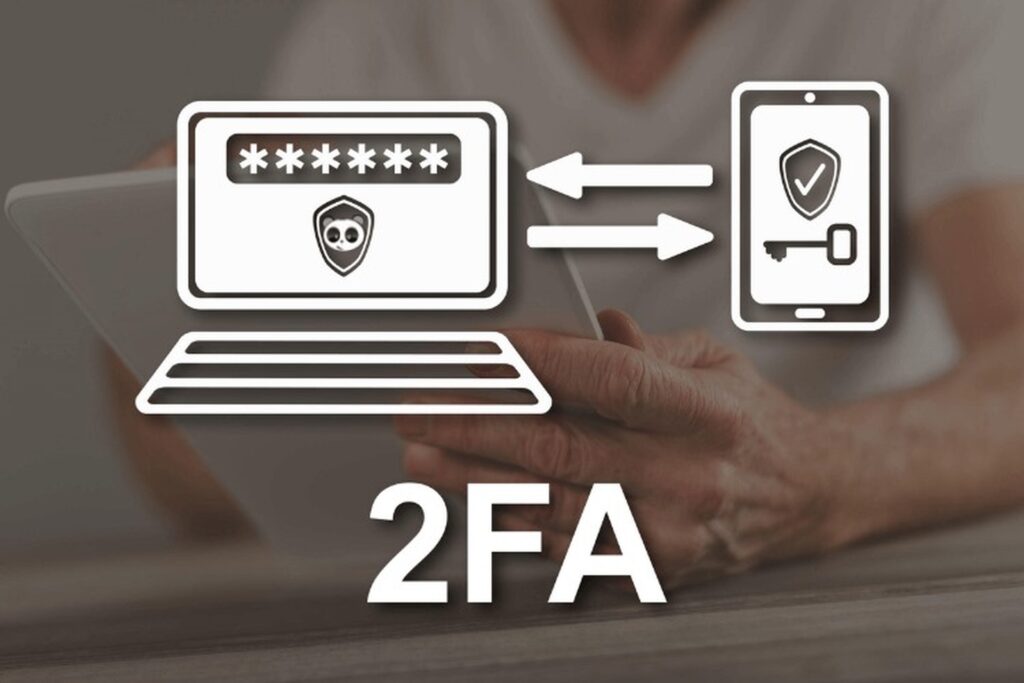Did you know that two factor authentication is a game-changer when it comes to online security? Let’s talk about why it’s so important and how to use it effectively.
What is Two Factor Authentication?
Two-factor authentication (2FA) is essentially a two-layer security method. When a user logs into an account on one device, they must verify the login on another device. This verification can be done in several ways, such as through SMS or email, via a specialized app, or using biometric data, physical keys, and more, depending on the user’s settings or the service provider’s requirements.
Two-Step Verification Includes:
Step 1: Enter your password
Step 2: Enter the 2FA code (usually a security token sent to your email, phone number, or via biometric methods like fingerprint or facial recognition).

Common Types of 2FA:
Authentication Apps/Software Tokens for 2FA: These generate a one-time password (OTP) that typically expires after 30 seconds.
- Examples: Google Authenticator, Microsoft Authenticator, Authy, etc.
Push Notifications for 2FA: A prompt appears on your mobile device after you enter your password, asking you to confirm (accept or reject) the login attempt by tapping on the notification.
- Examples: Microsoft Authenticator, Duo Mobile, etc.
Security Keys/Hardware Tokens for 2FA: Small hardware devices that usually connect via USB, NFC, or Bluetooth.
- Examples: YubiKey, Google Titan Security Key, Feitian Security Key, etc.
Biometrics: Biometric authentication includes fingerprint recognition, facial recognition, and voice recognition.
- Examples: Mobile and computer devices with built-in biometric sensors
Recovery Codes: These are codes generated when you first set up your account, including information like security questions or PIN codes.
- Examples: Google Backup Codes, GitHub, Facebook, etc.
Benefits of 2FA
2FA offers significant advantages in protecting online accounts. By creating two layers of security, it helps prevent unauthorized access. When logging into an account, you’ll need a code sent via SMS or email, or use other methods like fingerprint, facial recognition, or accepting a prompt on a secondary device. Some services even allow using a dedicated USB key to unlock the second layer of security. This greatly hinders attempts to gain unauthorized access.
Moreover, with 2FA enabled, users often receive email alerts when there’s a login from an unknown device, particularly for social media accounts like Facebook. This helps detect and stop unauthorized access. Features like login notifications not only prevent account hijacking but also help if a device that remains logged in is lost. Many apps and websites now offer simplified login methods, such as QR code scanning or entering a code sent to another device, which makes logging in both quick and secure.
Drawbacks of 2FA
While 2FA enhances security, it also has some drawbacks:
First, the need to use another device to complete the second layer of security can make logging in more time-consuming and sometimes impractical. Based on the operating principle of 2FA, users must obtain an authentication code or use another method to verify their login, such as biometrics or a USB key. If a user needs to access their account urgently, this requirement can be a hindrance. In the worst-case scenario, if the user loses their authentication device, logging in becomes impossible.
Second, authentication codes sent via SMS or email can encounter issues. Network problems or technical errors might delay the arrival of the code, causing users to repeatedly request the authentication code, which prolongs the login process. Users might also experience the issue of not receiving the authentication code at all, preventing login. Authentication errors in the second step can occur not only with OTP codes but also with biometric authentication methods. In some cases, users might face difficulties logging in with fingerprints, facial recognition, or voice recognition due to device errors, requiring an alternative method to unlock and log in.
Third, there is a risk of account intrusion during the authentication process. In some cases, malicious actors can exploit vulnerabilities to intercept authentication codes sent via SMS or email. Cybercriminals have developed sophisticated methods to steal these codes. Even if users employ biometric methods for the second layer of protection, these can still be compromised if the device containing the login account is lost.
Best Practices for Using 2FA
Despite its drawbacks, 2FA remains a robust security measure if used correctly and effectively.
Choosing the Right Authentication Method
Select an authentication method that suits your needs and security requirements. While SMS-based OTPs are commonly used, they may be vulnerable if your phone or email is compromised. Consider more secure options like USB security keys or biometric methods.
Combining Authentication Methods
Some apps and websites offer multiple authentication options. For instance, Facebook allows you to receive OTPs via SMS and also set up backup methods like an authenticator app, recovery codes, or security keys. Using multiple methods can ensure you can still log in if one method fails.
Regular Checks and Updates
Always keep your 2FA settings updated. If you change your phone number or email, update your account settings to ensure you can still receive authentication codes. If you change devices, transfer your authenticator app settings to the new device and delete them from the old one. Replace lost security keys with new ones to maintain account access.
Protecting Authentication Codes and Devices
Avoid sharing your authentication codes and keep your devices secure. If you use a USB security key or another device for authentication, ensure it’s kept safe and protected from loss or damage.
In Conclusion
By understanding and properly managing your 2FA settings, you can significantly enhance the security of your online accounts, ensuring better protection against unauthorized access.
